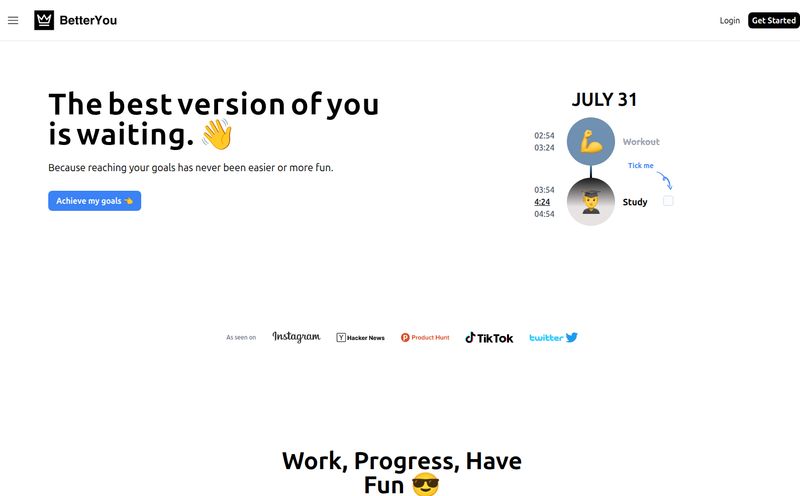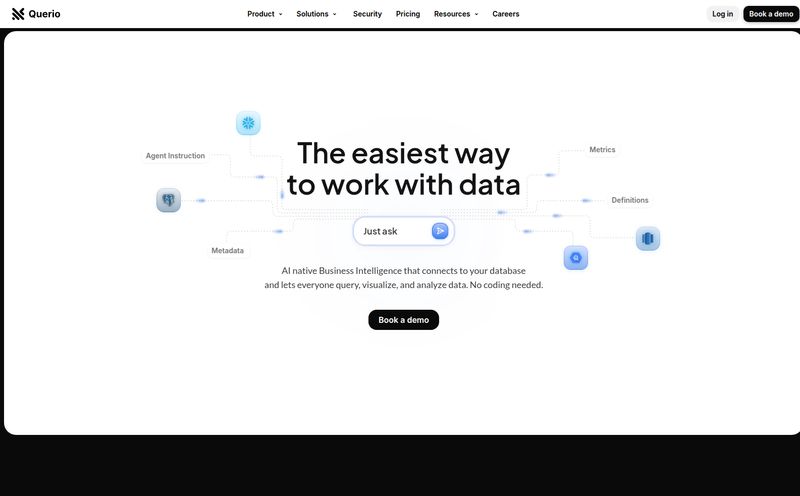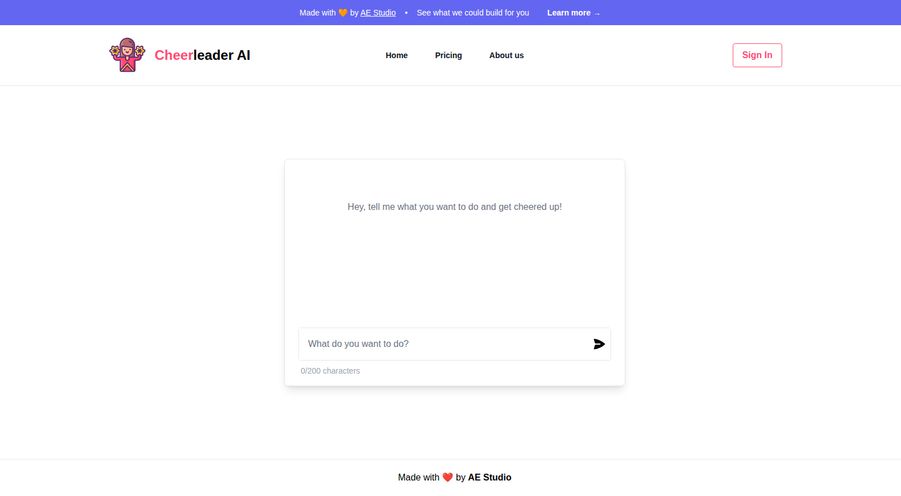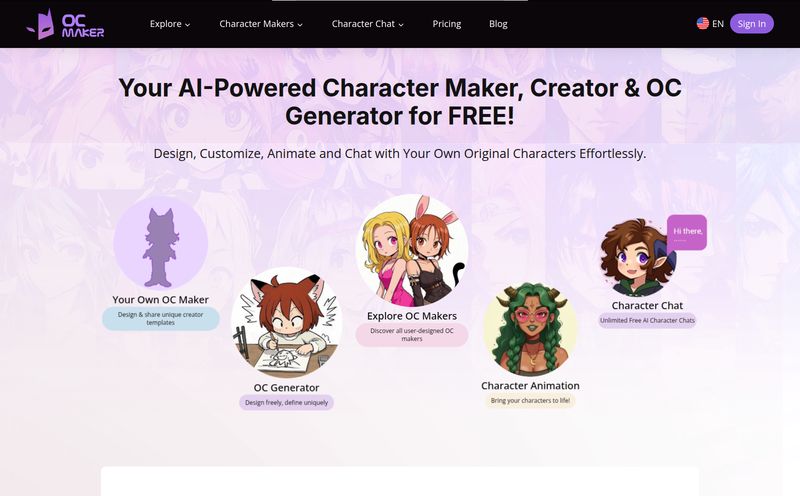We’ve all been there. You're deep in the zone, coding away, when you hit a wall. A very specific, very technical wall related to a database feature you know exists but can’t quite remember the syntax for. So you open a new tab and start the ritual. You search the official documentation. You click a promising link, only to be greeted by the soul-crushing void of a '404 Not Found' page. Ugh.
It’s a uniquely modern form of frustration. You spend the next 20 minutes wrestling with a clunky search bar, sifting through outdated forum posts, and generally losing all momentum. It’s the worst.
That’s why when I saw the TiDB AI Assistant, I felt a flicker of hope. Could this be it? Could this be the tool that lets us just… ask a question and get a straight answer? No more endless CTRL+F, no more documentation spelunking. Just a simple conversation.

Visit AutoFlow
So, What is This TiDB AI Assistant Thing Anyway?
At first glance, it looks like a chatbot for your database. Specifically, for TiDB, the popular open-source, distributed SQL database. You pop open a chat window, ask a question about a TiDB feature, and it gives you an answer. Simple enough.
But when you peek under the hood, it gets a lot more interesting. The engine driving this assistant is a system called AutoFlow. Think of AutoFlow as the brain, and the TiDB AI Assistant as the friendly face you talk to. It’s designed from the ground up to be a conversational knowledge base, and its secret sauce is a technology that’s been getting a lot of buzz in the AI world lately: Graph RAG.
Yeah I know, another acronym. But stick with me, because this one actually matters.
The Magic Behind the Curtain: Graph RAG and Vector Storage
To really get why this isn't just another ChatGPT wrapper, we have to talk about how it thinks. Most of us are familiar with the problems large language models (LLMs) have—they can confidently make stuff up, a phenomenon we affectionately call "hallucinating." To combat this, developers started using Retrieval-Augmented Generation, or RAG.
First, Let's Talk RAG
In my mind, standard RAG is like giving an AI an open-book test. Instead of relying purely on its pre-trained memory (which can be flawed or outdated), the AI first retrieves relevant information from a specific knowledge source—like a company's internal documents or, in this case, the entire TiDB documentation. Then, it augments its response with that retrieved info. This makes the answers way more accurate and grounded in reality.
Why a Graph RAG is a Serious Upgrade
AutoFlow takes it a step further with Graph RAG. This is the cool part. A standard RAG system is like a librarian who finds you a few relevant pages from a book. Helpful, but it doesn't always see the bigger picture.
A Graph RAG system, on the other hand, is like a librarian who hands you those pages but also shows you the library's card catalog, explaining how that topic connects to five other books, three academic papers, and a historical map on the wall. It doesn’t just find snippets of text; it understands the relationships between concepts. It builds a knowledge graph.
This means when you ask a complex question like, "How do I optimize transaction latency for a high-traffic e-commerce workload?" the TiDB AI Assistant can pull information about transactions, latency tuning, and workload management, and understand how they all connect to give you a genuinely helpful, synthesized answer. It’s a subtle difference on paper, but a massive one in practice.
The Powerhouse: TiDB Serverless and LlamaIndex
This whole system is built on some pretty slick tech. The knowledge graph and vector data (the numerical representations of the documentation that the AI understands) are stored in TiDB Serverless Vector Storage. The 'serverless' part is huge for developers—it means the system can scale up or down automatically without anyone having to provision or manage servers. It’s efficient and cost-effective.
And the whole thing is stitched together using LlamaIndex, a popular data framework for building LLM applications. It’s a solid, modern stack that shows this isn't just a weekend project; it's a serious tool.
The Real-World Benefits (And a Few Honest Caveats)
Okay, so what does this all mean for you, the person who just wants to get their work done? In my experience, the biggest advantage is speed. Not just the speed of the AI's response, but the speed of your entire workflow. Instead of a 20-minute documentation deep-dive, you get a 20-second conversation. That time adds up.
The use of a knowledge graph means the answers have context. They aren't just isolated facts. This leads to fewer follow-up questions and more clarity on the first try. It’s a game changer for productivity.
Of course, it’s not perfect. For one, it’s a specialist. It knows a ton about TiDB but it can’t help you with your React code or your weekend sourdough recipe. Its knowledge is confined to its domain. Also, its accuracy is completely dependent on the quality and completeness of the underlying knowledge graph. If the documentation is vague or missing something, the AI will be too. It’s a powerful assistant, not an all-knowing oracle.
Alright, So How Much Does It Cost?
This is the million-dollar question, isn't it? As of right now, there's no public pricing page for the TiDB AI Assistant or AutoFlow as a standalone product. My gut feeling is that this is less of a product you'll buy separately and more of a feature that will be integrated into the broader TiDB Cloud ecosystem. It's a value-add, a powerful reason to use their platform. It’s possible it could be a tiered feature, with basic access for free and more advanced capabilities for enterprise customers, but we'll have to wait and see what PingCAP decides.
FAQs About the TiDB AI Assistant
- What exactly is AutoFlow?
- AutoFlow is the underlying technology platform for the TiDB AI Assistant. It's the system that uses Graph RAG and a knowledge graph to understand and answer questions about TiDB documentation.
- How is this different from just using ChatGPT?
- The key difference is RAG (Retrieval-Augmented Generation). While ChatGPT relies on its general pre-trained knowledge (which might be outdated or incorrect about niche topics), the TiDB AI Assistant uses RAG to pull live, accurate information directly from TiDB's official documentation, making its answers far more reliable for technical questions.
- Who is this tool designed for?
- It's for anyone who works with the TiDB database—database administrators (DBAs), backend developers, data engineers, and even technical support staff. If you ever find yourself searching TiDB docs, this tool is for you.
- Is Graph RAG really that much better than normal RAG?
- In my opinion, yes. For complex domains like databases, understanding the relationships between concepts is critical. Graph RAG provides more contextually aware and accurate answers for multi-part or nuanced questions, which is a significant step up from simple document retrieval.
- Is the TiDB AI Assistant free to use?
- Pricing details haven't been released. It's likely to be integrated as a feature within the TiDB Cloud platform, but the exact model (free, tiered, or paid add-on) is not yet public.
- How does it handle complex, multi-part questions?
- This is where the knowledge graph shines. By understanding how different concepts (like 'transactions', 'indexes', and 'performance tuning') are related, it can synthesize information from multiple parts of the documentation to construct a coherent and comprehensive answer to a complex query.
My Final Thought: Is This the Future of Docs?
Look, I've seen a lot of AI tools come and go. Many are just hype. But this feels different. The combination of a conversational interface with the technical sophistication of Graph RAG is a genuinely smart solution to a real, nagging problem.
It’s not about replacing developers; it’s about augmenting them. It’s about removing the tedious, frustrating parts of the job so we can focus on what we do best: building cool stuff. I for one am excited to see where this goes. If this is the direction technical documentation is heading, then our days of staring at 404 pages might just be numbered.
Reference and Sources
- PingCAP Official Website (Creators of TiDB)
- TiDB Cloud Platform
- LlamaIndex - The Data Framework for LLM Applications
- An Explainer on Graph RAG from NebulaGraph



